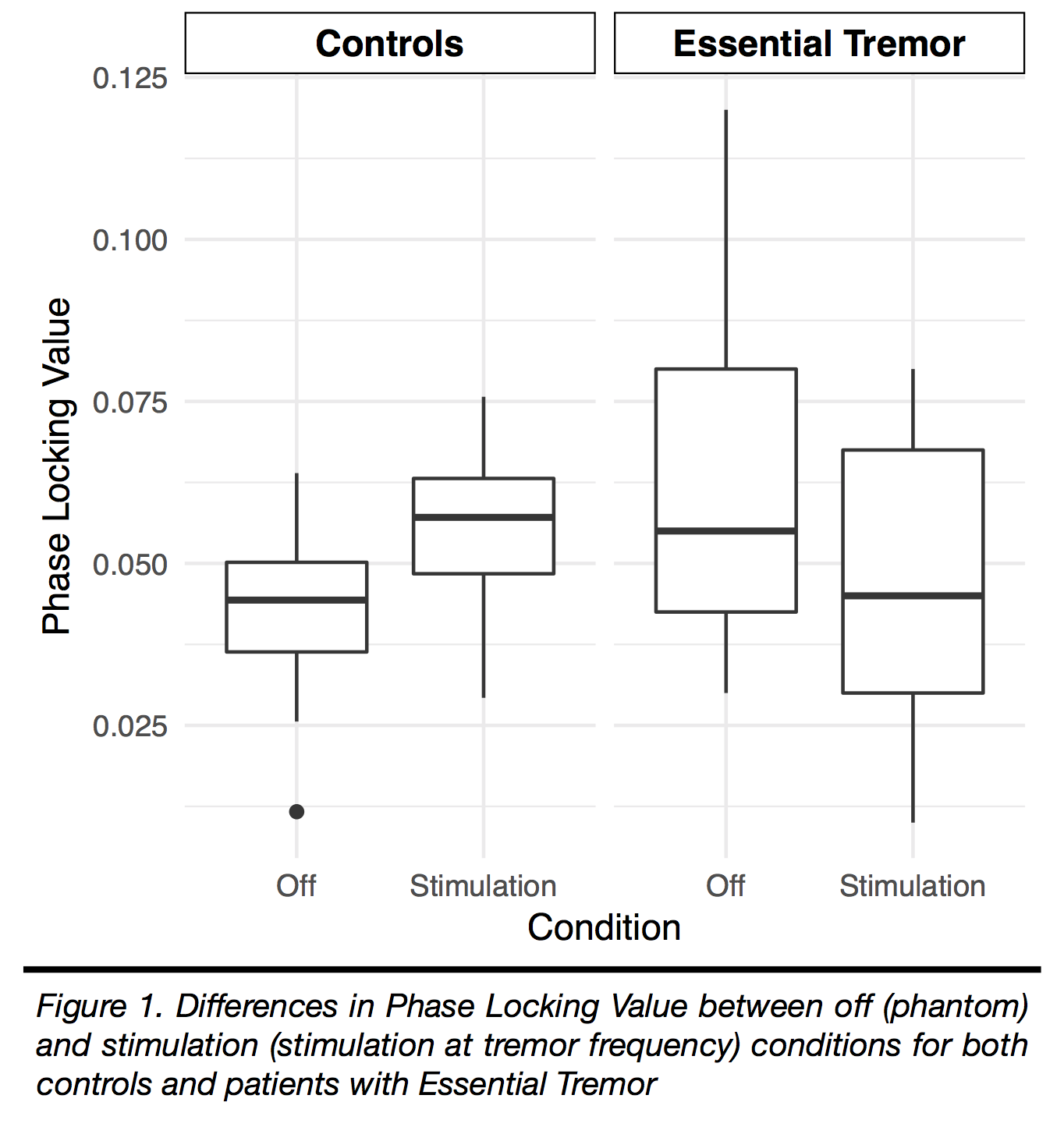Session Information
Date: Sunday, October 7, 2018
Session Title: Tremor
Session Time: 1:45pm-3:15pm
Location: Hall 3FG
Objective: To explore the effect of transcranial electrical stimulation applied to the head in modulating tremor phase in controls and in patients diagnosed with Essential Tremor.
Background: Transcranial alternating current stimulation (tACS) is a non-invasive neuromodulation technique which has been demonstrated to entrain rhythmic movements in healthy volunteers. Brittain et al. [1] demonstrated up to a 50% reduction in tremor amplitude in individuals with tremor dominant Parkinson’s disease. Essential tremor (ET) is a common movement disorder which can be disabling and difficult to treat. Only a few studies have explored the effects of tACS in ET.
Methods: Seven control participants and ten patients diagnosed with ET by a neurologist were included. tACS was applied at a frequency which matched the individuals own tremor frequency and a phantom control condition. These conditions were applied in a block randomized fashion of five sets. A focused stimulation montage was employed over the motor cortex (M1) of each participant. Phase lock value (PLV) quantifies the level of entrainment between two signals (i.e. individual tremor signal and stimulation signal) and ranges from 0 to 1, where 0 is completely unlocked. The effect of stimulation on PLV was assessed compared to phantom stimulation. Data was analyzed using non-parametric statistics (Wilcoxon signed-Rank) using a critical value p<0.05.
Results: In ET patients, between-condition comparison demonstrated stimulation at tremor frequency did not result in an increase in PLV (W=45, p=0.997). Notably a trend of PLV towards decreased entrainment was observed across ET patients (Fig. 1). In control patients, entrainment of physiological tremor was increased during stimulation at tremor frequency (W=5, p=0.039). tACS was well tolerated in all patients and no phosphenes were reported, consistent with previous findings from use of a focused montage.
Conclusions: Consistent increases in entrainment between the phase of stimulation and tremor were not demonstrated across all individuals. These findings may indicate a sub-optimal level of stimulation delivered to the cortex in tACS, thus limiting any quantifiable clinical effects. Large variability in tremor amplitude in ET patients was observed, which affects statistical inference. The use of tACS in patients with essential tremor will require further exploration. [figure1]
References: [1] J. S. Brittain, P. Probert-Smith, T. Z. Aziz, and P. Brown, “Tremor Suppression by Rhythmic Transcranial Current Stimulation,” Current Biology, vol. 23, no. 5, pp. 436-440, Mar. 2013.
To cite this abstract in AMA style:
F. Maguire, T. Munteanu, A. Khatoun, M. Mc Laughlin, T. Lynch, R. Reilly. Early Experiences with Entrainment by Transcranial Alternating Current Stimulation in Patients with Essential Tremor [abstract]. Mov Disord. 2018; 33 (suppl 2). https://www.mdsabstracts.org/abstract/early-experiences-with-entrainment-by-transcranial-alternating-current-stimulation-in-patients-with-essential-tremor/. Accessed January 4, 2026.« Back to 2018 International Congress
MDS Abstracts - https://www.mdsabstracts.org/abstract/early-experiences-with-entrainment-by-transcranial-alternating-current-stimulation-in-patients-with-essential-tremor/

